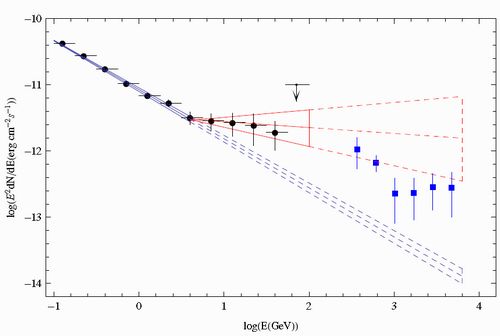We report on an analysis of Fermi-LAT data from four year of observations of the nearby radio galaxy Centaurus A (Cen A). The increased photon statistics results in a detection of high-energy (> 100 MeV) γ-rays up to 50 GeV from the core of Cen A, with a detection significance of about 44σ. The average gamma-ray spectrum of the core reveals evidence for a possible deviation from a simple power-law. A likelihood analysis with a broken power-law model shows that the photon index becomes harder above Eb ≃ 4 GeV, changing from Γ1 = 2.74 ± 0.03 below to Γ2 = 2.09 ± 0.20 above. This hardening could be caused by the contribution of an additional high-energy component beyond the common synchrotron-self Compton (SSC) jet emission. A variability analysis of the light curve with 15-, 30-, and 60-day bins does not provide evidence for variability for any of the components. Indications for a possible variability of the observed flux are found on 45-day time scale, but the statistics do not allow us to make a definite conclusion in this regards. We compare our results with the spectrum reported by H.E.S.S. in the TeV energy range and discuss possible origins for the hardening observed. 
Gamma-ray spectrum for the core of Cen A from high (Fermi/LAT, this work) to very high (H.E.S.S., blue squares) energies. The blue bowtie represents a power law with photon index 2.74, and the red bowtie a power law with photon index 2.09. The dashed lines show extrapolations of these models to higher energies. The power-law extrapolation of the low-energy component (blue lines) would underpredict the fluxes observed at TeV energies. By with YANG Ruizhi The work by N. Sahakyan, YANG Ruizhi,has been accepted to be published in the ApJ Letters, please see ApJ, 770, L6 for more details.(http://iopscience.iop.org/2041-8205/770/1/L6/) |
